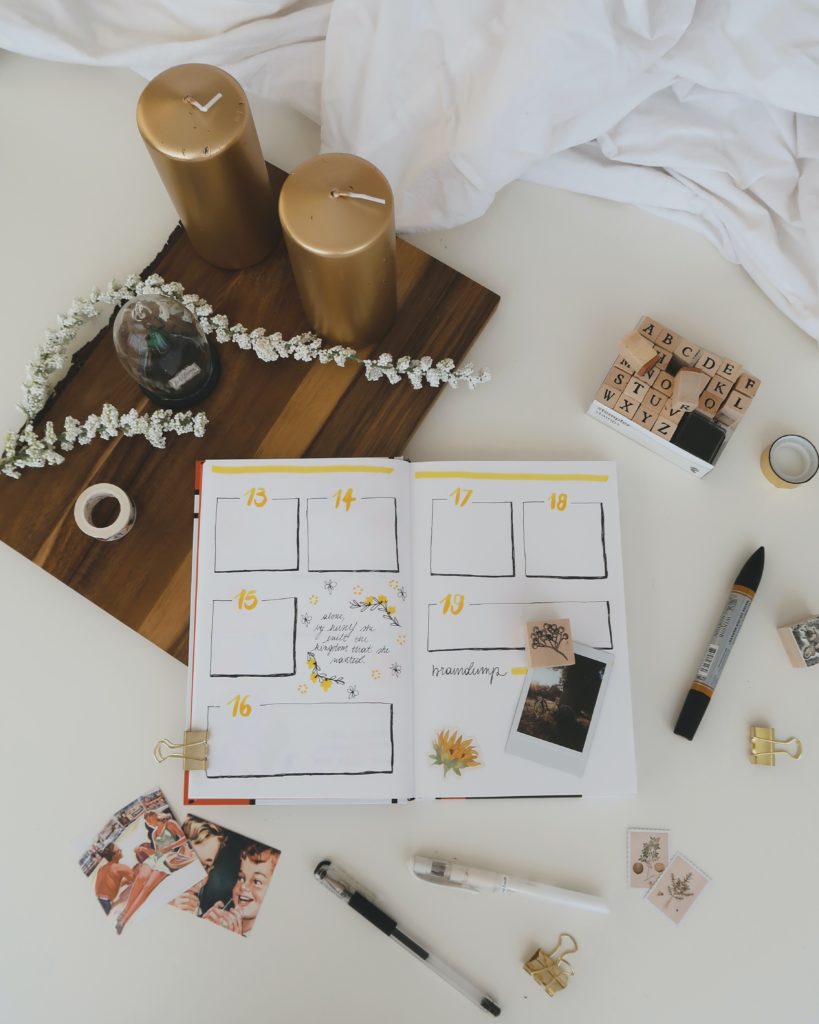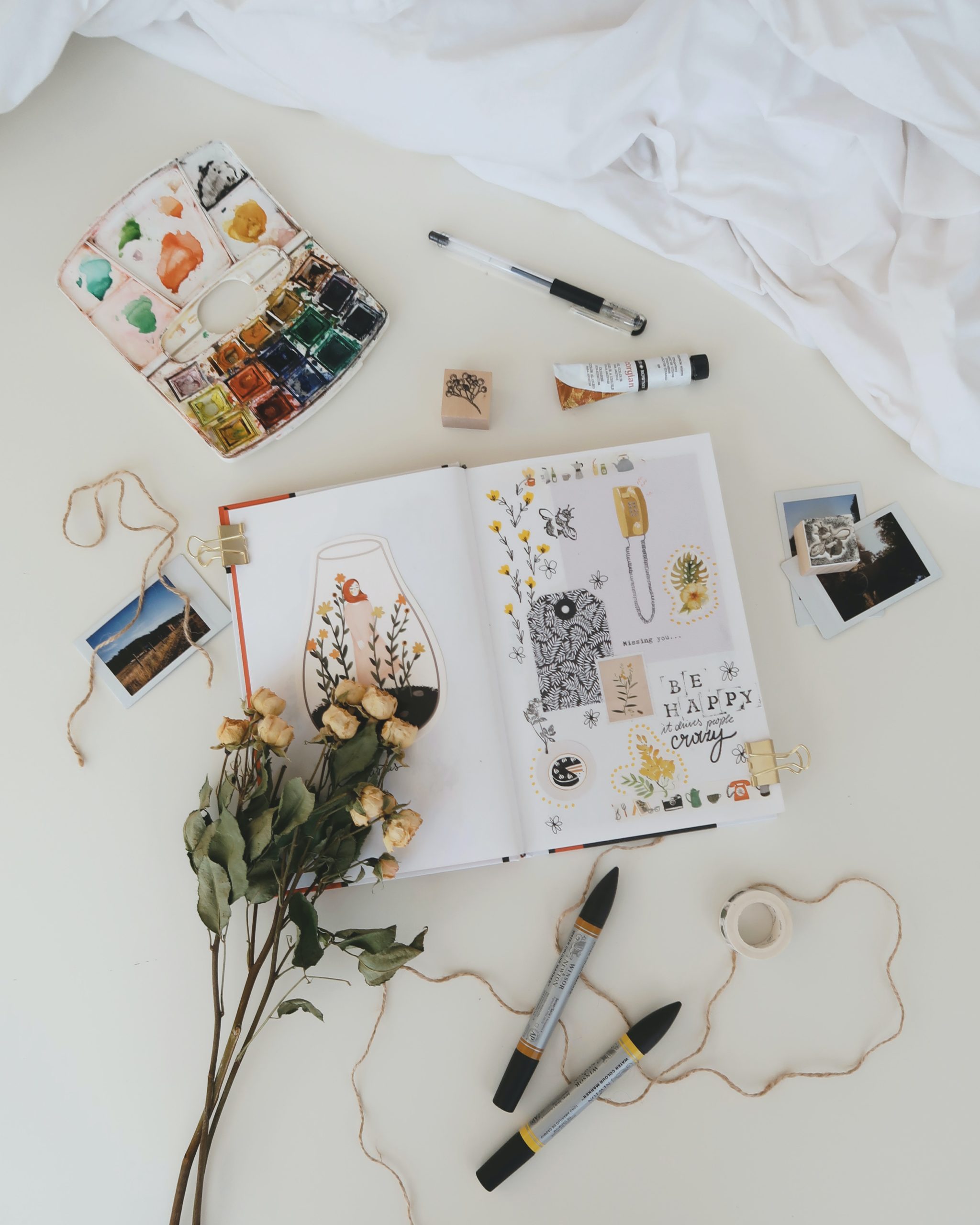If you’ve tried just about every planner or organization app on the market yet still struggle to find one centralized system that works for you, bullet journaling may be the answer you’ve been looking for.
What is bullet journaling?
Bullet journaling is a fun and simple practice that appeals to tidy-minded organization junkies and creative free spirits alike. It allows you the flexibility of using blank pages to design exactly what you need to stay organized, track habits and goals, journal your thoughts, make to-do lists, and take notes all in one place.
The difference between journaling and bullet journaling
Journaling typically involves writing out a stream of thought or can be used to work through emotions. It can be a grounding practice that allows you to stay in tune with yourself and build harmony in your life.
Bullet journaling is a more modern practice, and the idea was to simplify and diversify how we journal. With busier lives, we don’t always have time to write pages of thoughts, and we’re doing more, so there’s also more to keep track of. Bullet journaling seeks to combine the practice of traditional journaling with modern-life organization.
The benefits of bullet journaling
Bullet journaling can give you space to organize your life, goals, thoughts, and big ideas – it can also be an effective tool for tracking habits, behaviors, and moods over time. If you’re willing to commit to it, bullet journaling can offer you a path toward self-discovery, self-discipline, awareness, and personal growth.
Here are some of its other benefits:
- Daily self-care and mindfulness practice
- Realistic goal setting
- Greater productivity
- Increased self-awareness
- Improved time management
- Stronger organizational skills
- Expanded creativity
- Increased commitment to habits
Supplies You’ll Need for Bullet Journaling
Basic supplies:
Below is a list of essential supplies for bullet journaling. If you prefer a straightforward and minimalist look, these are all the supplies you’ll need.
- A bullet journal: Traditionally, a dotted journal is used but feel free to use a notebook or check out our Pathway Planner.
- Pencil and eraser: You will use these to draft and plan out your pages and spreads
- Ruler: A must to draw out clean layouts, boxes, and lines
- A fine line pen or set of pens: These can be used for sketching or writing in your journal
Optional supplies:
The supplies below are recommended for those looking to incorporate color and creativity into their bullet journaling experience.
- Brush pens, colorful markers, or highlighters: Bring your journal to life by adding a splash of color to your pages.
- Washi tape: Use it as section separators and page borders, or cut it into shapes and use it as stickers.
- Stickers: Deck out your journal pages and monthly cover pages by adding stickers throughout.
- Stencils: For those who’d prefer not to draw, layout stencils or themed stencils can be a fun way to create your pages.
Getting Started with Bullet Journaling
1. Brainstorm what habits and activities you want to track and what pages you want to create
You may want to consider dedicating the first few pages to yearly trackers or goals, followed by monthly pages and weekly and/or daily pages.
For example:
Yearly pages could include goals for the year, a vision page, books read, and a 12-month calendar overview.
Monthly pages could include a themed monthly cover page; a calendar spread with birthdays and important dates, a habit tracker, a mood tracker, a gratitude page, monthly goals, and to-dos. You could also end each month with a month-in-review page where you note some of the month’s highlights and what you accomplished.
Weekly pages could include meal planning and grocery lists, to-do lists, plus anything you’re hoping to keep track of on a weekly or daily basis
Feel free to incorporate blank brain dump pages if you’d also like to use your bullet journal as a personal journal. Consider having a page a day, per week, or month that you leave blank to jot some of the more random thoughts and ideas you have.
These are just some of the most common uses for bullet journals, but there really is no limit or rules about what to track and how.
Now that you know what you want to track, start assigning the pages in your bullet journal.
2. Start designing your pages
Once you’re clear on what you want to track and the order you want your pages or spreads to be, you can start designing your pages.
If you’re looking for some design inspiration, a search for “bullet journaling” on Pinterest will yield many search results and fun ideas for you to be inspired by.
Some prefer to take an artistic approach to bullet journaling, so one idea is to assign a theme to each month. Fun doodles, colorful pens, stickers, and washi tape can help you bring your monthly theme to life.
Others may prefer a more straightforward approach to bullet journaling – in this case, you can create streamlined layouts using just your pencil, ruler, and pen.
A layout refers to how you will organize the information on each page. A layout can be made up of different-sized boxes with titles, or it can be composed of lines separating sections of the page in a way that makes sense to you.
You don’t need to overwhelm yourself with trying to design all your pages at once. When starting a new journal, you may want to begin with your yearly spreads, one month of monthly pages, and one weekly page. You can add a new weekly page at the end of each week and new monthly pages at the end of each month.

3. Begin tracking and organizing your life
Once you have your desired pages set up, bullet journaling should only take 10-20 minutes each day. It’s a small but impactful commitment you can add to your morning or evening routine.
As you go through the motions of bullet journaling each month, you may find certain layouts aren’t working for you, and that’s ok! Bullet journaling is about self-exploration and experimentation – keep switching up the layouts and what you track until it makes sense to you.
As you track your daily habits, write in what you’re grateful for, and implement systems that help you stay organized, I guarantee you’ll start to feel calmer, more optimistic, self-aware, and accomplished. There is something about physically ticking off habits and to-dos that gives us instant positive reinforcement and the motivation to stay on track.
The Pathway Planner
It should be no surprise that I am a big fan of bullet journaling, so much so that I made my own!
When I first started bullet journaling, I experimented with many layouts, and once I found ones that worked for me, I wanted to find a way to streamline my page layouts for the week, month and year. That’s when the idea of the Pathway Planner came to me.
The Pathway Planner comes with ‘done for you’ template pages and blank pages to use as you please. Unlike most bound bullet journals, this one comes in a leather binder – making it the most flexible bullet journal on the market today.
Additionally, you can customize your Pathway Planner by choosing from structured or explorer pages. Structured pages are fully done for you and include a touch of black and white design – this is the option for you if you’re focused less on design and more on content. The Explorer pages are for those who thrive on soft suggestions and guidance – this option offers plenty of flexibility for individual creativity.
I plan to launch the Pathway Planner later in 2023 – stay tuned for updates!

